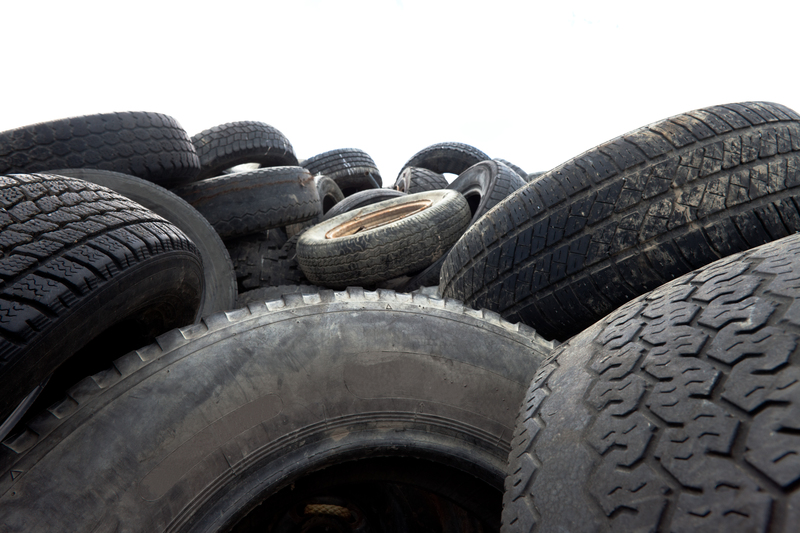Simplifying Packaging and Cardboard Waste Processes
Are you looking for ways to make your packaging and cardboard waste processes more efficient and sustainable? In today's eco-conscious landscape, businesses and individuals alike are seeking practical solutions to reduce their environmental impact while streamlining operations. In this article, we explore various methods and strategies for simplifying packaging and cardboard waste processes--helping you save time, lower costs, and contribute to a cleaner planet.
Understanding the Importance of Efficient Packaging and Cardboard Waste Management
Packaging and cardboard are integral parts of modern commerce. From e-commerce shipments to retail supply chains, cardboard is everywhere. However, improper handling and disposal of packaging materials result in:
- Excessive landfill contribution
- Increased operational costs
- Environmental pollution
- Inefficient logistics
That's why simplifying packaging waste and cardboard disposal processes has become a major priority for responsible organizations. Optimizing these processes leads not only to sustainability but also to significant cost savings and enhanced operational efficiency.

Key Challenges in Cardboard and Packaging Waste Management
Before delving into solutions, it's important to recognize some of the main challenges businesses and individuals face with cardboard and packaging waste:
- Space Constraints: Bulky boxes and packaging consume valuable storage.
- Labor Intensity: Sorting and breaking down packaging can be time-consuming.
- Low Recycling Rates: Contaminated or improperly disposed of packaging often ends up in landfills.
- Waste Contamination: Mixing cardboard with other waste reduces recyclability.
- Complex Disposal Regulations: Local guidelines may complicate the process.
Addressing these issues is central to simplifying packaging and cardboard waste management.
Best Practices for Simplifying Packaging Waste Processes
Implementing the following best practices can significantly streamline the way you handle packaging and cardboard waste:
1. Reduce Packaging at the Source
- Audit Your Packaging Needs: Regularly review your packaging materials and switch to right-sized, minimalist packaging to reduce waste.
- Opt for Reusable Solutions: Consider tote bins and durable crates for repeated shipments.
- Select Recyclable Materials: Use packaging made from recycled or easily recyclable materials.
2. Organize and Segregate Cardboard Waste
- Create Designated Collection Points: Set up clearly labeled recycling stations or bins for cardboard and paper-based packaging.
- Train Staff: Ensure all employees know how to flatten boxes and sort materials properly.
- Prevent Contamination: Maintain separate bins for different kinds of waste to maximize recycling rates.
3. Use Efficient Processing Equipment
- Invest in Balers and Compactors: These machines compact cardboard, reducing its volume and making storage and handling easier.
- Utilize Shredders: Shredding cardboard can produce packing material or make recycling more efficient.
4. Partner with Reliable Recyclers
- Choose Certified Recycling Providers: Ensure your waste is handled in compliance with environmental standards.
- Schedule Regular Pick-ups: Contract a recycling company for weekly or bi-weekly collections to avoid overflow and maintain tidiness.
5. Educate and Involve All Stakeholders
- Launch Training Programs: Hold regular training sessions on best practices for packaging disposal and recycling.
- Share Sustainability Goals: Involve suppliers, logistics partners, and customers in your efforts to reduce cardboard waste.
Innovative Methods for Handling and Recycling Cardboard Waste
Recent advancements offer innovative approaches to simplifying cardboard waste processes:
Automated Waste Sorting Systems
- Intelligent Sorting Belts: These systems automatically separate cardboard from other materials, enhancing recycling rates.
- Optical Scanners: Employ AI to identify and sort different types of packing materials.
Onsite Cardboard Recycling Machines
- Cardboard Perforators: Transform old boxes into eco-friendly packing supplies for product cushioning and protection.
- Mini-Balers: Compact cardboard waste into manageable bales for easy transport and recycling.
Return and Reuse Programs
- Closed-Loop Logistics: Facilitating the return of packaging materials for cleaning and reuse, drastically cutting down on waste.
Environmental and Economic Benefits
Streamlining packaging and cardboard waste management delivers far-reaching benefits:
- Reduces Landfill Waste: Proper recycling diverts tons of cardboard from landfills annually.
- Lowers Costs: Less waste means reduced disposal fees and potential revenue from recycled cardboard sales.
- Improves Brand Reputation: Eco-friendly practices resonate positively with consumers and partners.
- Enhances Operational Efficiency: Less clutter and simplified workflows save time and resources.
Technology's Role in Simplifying the Packaging and Cardboard Waste Process
Technology is at the heart of modern waste management. Adopting digital solutions can further simplify and optimize the entire packaging and cardboard disposal process.
Smart Waste Tracking Solutions
- Data-Driven Decision Making: Use waste management apps and sensors to monitor volumes, spot inefficiencies, and optimize collection schedules.
Automated Inventory for Reusable Packaging
- Reduce Packaging Loss: Track reusable crates, pallets, or bins using RFID technology, minimizing loss and waste.
Common Myths About Packaging Waste Simplification Debunked
Myth 1: Recycling Alone Is Sufficient
Fact: While recycling is essential, the greatest impact comes from a holistic approach--reducing, reusing, and recycling.Reusing packaging before recycling maximizes its value.
Myth 2: All Cardboard Is Easily Recyclable
Fact: Contaminants such as food residue or excessive tape render some cardboard non-recyclable. Proper sorting and cleaning are crucial.
Myth 3: Sustainable Packaging is Too Expensive
Fact: Initial costs may be higher, but simplified packaging and cardboard waste processes often lead to major savings in materials, labor, and disposal fees.
Simplifying Packaging Waste at Home
The movement to simplify cardboard and packaging waste management is not limited to businesses. Here are some practical tips for households and individuals:
- Flatten All Cardboard Boxes: This saves space in your recycling bin and makes transport easier.
- Keep Cardboard Clean and Dry: Moist or soiled cardboard can't be recycled.
- Remove Excess Tape and Stickers: This increases the recyclability of your cardboard waste.
- Get Creative: Reuse boxes for storage, crafts, or moving before recycling them.
Packaging Waste Regulations: Stay Compliant
Adhering to local regulations is a key part of simplifying packaging and cardboard disposal processes. Stay updated on relevant guidelines such as:
- Segregation Requirements: Certain jurisdictions require separate collection for cardboard and paper products.
- Producer Responsibility Laws: Some regions have "Extended Producer Responsibility" (EPR) rules mandating that companies manage the end-of-life of their packaging.
- Reporting Duties: Businesses may need to report on the weight and volume of their recyclable packaging materials.
Staying compliant not only avoids fines but ensures you're contributing responsibly to a sustainable future.
Case Studies: Companies Leading the Way in Cardboard Waste Simplification
Amazon
Amazon continuously refines its Frustration-Free Packaging to use less material while protecting products. Their efforts have removed more than 900,000 tons of packaging since 2015, setting an industry benchmark for efficient cardboard usage and waste reduction.
IKEA
IKEA redesigns its packaging to use thinner, highly recyclable cardboard and minimal ink. The company prioritizes flat packing and in-store recycling schemes, allowing customers to return used packaging directly to stores.
Local E-commerce Startups
Many startups collaborate with local recycling services, use exclusively recycled-content boxes, and educate customers on proper box disposal, showing that you don't have to be a giant to make a big impact.

Future Trends in Simplifying Packaging and Cardboard Waste Processes
- Circular Packaging Solutions: From reusable shipping boxes to take-back programs, the future is circular.
- Biodegradable and Compostable Cardboards: New materials promise to further reduce environmental impact.
- AI-Driven Waste Management: Artificial intelligence will automate sorting, reduce contamination, and enhance recycling rates.
Staying ahead of these trends will help your business or household remain agile and environmentally responsible.
Conclusion: Take Action to Simplify Your Packaging and Cardboard Waste Process
Efficient packaging and cardboard waste management is more critical than ever--for our planet and your bottom line. By adopting the strategies above, streamlining cardboard waste disposal and packaging processes becomes a tangible, impactful goal.
- Minimize and audit your packaging habits.
- Learn and share best practices for separating, compacting, and recycling cardboard waste.
- Utilize modern equipment and technology for smarter waste management.
- Stay informed about regulations and take inspiration from industry leaders.
Whether you are a business, a non-profit, or an individual, simplifying packaging and cardboard waste processes is a journey worth taking--for operational efficiency, compliance, and the greater good of the environment.
Start simplifying today and help build a cleaner, more sustainable tomorrow.
```